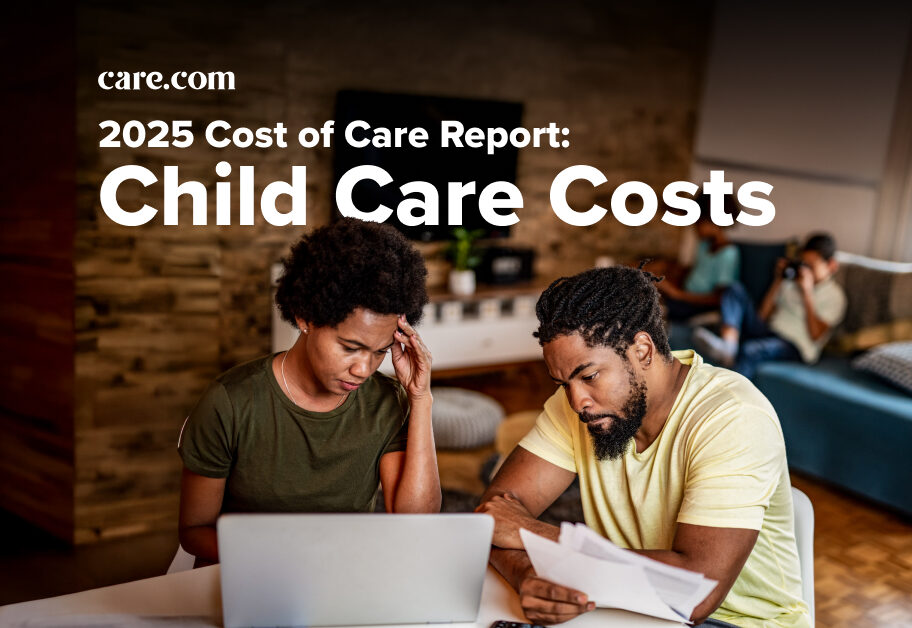You’ve been stuck in the house for — what? — a year now and you’re itching for a vacation. A break from the Zooms, the hybrid schedules, and frankly, your house. Really, we get that on a spiritual level. While summer travel has the potential to be safer than it was last year, when we were mere months into the COVID-19 pandemic, it still isn’t what it was in the halcyon days of 2019. Are summer vacations doable? Yes. But there are still risks.
“Whenever we travel, we put ourselves in situations that are outside of our control,” says Dr. Kunjana Mavunda, Director of the International Travel Clinic in Miami. “Even if we’re adhering to all the safety rules regarding COVID, there’s still the issue of non-compliance in others. You can be sitting next to someone on a plane who decides to take their mask off to talk loudly (which can spread the virus more efficiently). While we can cut down on our risks of COVID transmission when traveling, it’s impossible to eliminate them completely.”
Looking for family summer vacations in this weird world we’re all still living in? Here are travel options, ranked from most to least risky, along with expert input on how to mitigate said risks.
1. Taking a cruise
Any form of summer 2021 travel is going to be accompanied by risks. But in many cases, once the destination is reached, risks can be reduced by implementing safety precautions, such as social distancing and wearing masks. The major outlier of pandemic vacation destinations? Cruises. And yes, this includes Disney Cruises.
“Cruise ships are still ticking time bombs in the middle of a global pandemic,” says Dr. Joyce Sanchez, an infectious disease specialist and Director of the Travel Health Clinic at Froedtert & the Medical College of Wisconsin. “The environment is simply too ideal for virus transmission.” Sanchez adds that the Centers for Disease Control (CDC) has issued a Level 4 Travel Health Notice for cruise ship travel, regardless of where you board or where you may stop. Put another way: The CDC recommends that you “do not travel [via cruise] at this time.”
Breaking it down further, Mavunda explains that, despite the abundance of open space on cruise ships, they’re “superspreaders” since “there are always going to be times when there will be mingling between passengers and between crew and passengers.”
“Research has already shown a link between eating at restaurants and viral transmission,” Mavunda notes. “On cruises, people will be eating with others several times a day – so the risk of transmission increases. Also, activities, such as entertainment — where people may be singing or laughing — lead to increased transmission, as do common areas, such as pools, sun decks and gyms.”
If you do decide to take your family on a cruise, the CDC recommends getting tested 3-5 days after your trip and staying home for seven days after travel, regardless of test result.
2. Traveling by plane
Here’s the good news when it comes to plane travel: Modern airplanes have efficient air circulation, so “viral and other particles are removed within seconds, decreasing the chance of spreading infection,” according to Mavunda. The bad news: There’s more to air travel than sitting in a plane for a few hours, watching a bad movie.
“Prior to getting on the plane, you need to go through security lines and wait at the gate,” Mavunda says. “Once you arrive, you may need to stand around other people at baggage claim. There’s also using the bathroom or getting food at the airport — all these things increase risk of transmission. A flight may be only two hours, but time spent traveling around other people is much longer.”
Also, Sanchez points out, staying six feet apart from others may not be an option when traveling by plane. “Social distancing is not always possible, especially on crowded flights,” she notes, adding that “others near you may remove their masks to eat and drink.”
Here are a few things that can mitigate the risks associated with air travel, according to Mavunda and Sanchez:
-
Don’t check bags. If possible, bring a carry-on only. As Mavunda noted, checking bags will expose you to more crowds, and in turn, more potential for virus transmission.
-
Consider your seat. According to Mavunda, window seats are generally the safest seating option, as there is “less exposure to people walking down the aisle.” Additionally, Mavunda notes that seats in the front of the plane are safer, so long as you board after others and are one of the first to disembark. “A seat that is near the bathrooms may be riskier,” she adds, “since there will be more people walking to or waiting near the toilet.”
-
Know airline policies. “Some airlines attempt to book fewer passengers than full capacity,” Mavunda points out. “They may try to keep the middle seat empty to allow for social distancing. However, for popular routes, this may not be possible.” Sanchez recommends contacting the airline beforehand to find out their policies on face coverings and if they limit the number of people per flight.
-
Consider your health circumstances. As with anything in the COVID era, it’s important to take your personal situation into account. “Before traveling by commercial air, consider your own underlying medical conditions, health risks and the risks of those who are your contacts,” Sanchez says. “Your medical provider can answer questions about health conditions that would put you at risk for developing severe disease, including conditions such as advanced age, heart disease, diabetes, lung disease, asthma or a compromised immune system.”
-
Consider flight time. The longer the trip, the less likely that safety protocols will be followed at all times, Mavunda explains. It’s safe to say people are bound to take masks off to eat and drink during a 10-hour flight.
-
Always use the 3 W’s. Wear a mask. Watch your distance. Wash your hands.
It’s also important to note that the CDC recommends travelers flying both international and domestic get a COVID test 1-3 days before traveling and requires getting tested 3-5 days after returning and self-quarantining for 7 days, regardless of result.
3. Flying to an international destination
In addition to international travel posing more opportunities for exposure (due to the amount of travel time), there also are a number of rules to consider with this type of travel. “Meeting border requirements for entry and return alone are a significant barrier for many people who are considering travel,” says Sanchez. “Many countries currently require a negative COVID-19 test prior to departure with varying stipulations on the type of test accepted (PCR, rapid antigen test), type of documentation (official medical record transcript, QR code) and timeframe from which the test was obtained (within 72-96 hours prior to departure).”
Sanchez notes that even when processes have been carefully followed, delays in test results and long turnaround times can be additional barriers to traveling. “These often-insurmountable logistical challenges do not take into account the rapidity in which travel requirements change, nor the inconsistency between countries and regions,” she explains. “While some countries have implemented the concept of ‘vaccine passports’ that negate need for testing or quarantine, most presently do not take vaccine status into account.”
The CDC monitors case counts of COVID-19 around the globe closely and has developed a 4-level system, which aligns with the U.S. Department of State’s Travel Advisory system, so it’s important to know the level of your targeted destination. “Countries or territories determined to be Level 1 have low levels of COVID-19 and usual precautions are advised,” she notes. “[Countries at] Level 4 have very high levels of COVID-19, and travelers are advised to avoid travel to these destinations. These levels can and do change rapidly, so for those who choose to travel, I recommend they stay connected with the Smart Traveler Enrollment Program, a free service run by the US Department of State.”
One caveat to note: “Your home country or travel destination may be a Level 1 or 2, but it is possible that you may be sharing your flight, vehicle, airport terminals and other common spaces with others coming from a community with a higher level of transmission,” Sanchez says. “This also applies to destinations with higher concentrations of tourists coming from around the globe. So it’s still important to practice the precautions known to mitigate risk.”
4. Traveling by train or bus
According to Sanchez, public transportation carries moderate to high risk, due to the volume of people sharing enclosed spaces, including shared train cars and indoor terminals and stations, which may not have options to distance. Here are a few ways to cut down on risks:
-
Try to avoid peak travel times when more people are present.
-
If possible, sit at least two rows away from others.
-
Wear a mask and disinfect your hands after touching surfaces.
5. Driving to a vacation rental
A safer option than traveling by plane, train or bus — and one that’s more fun than a complete staycation — is driving to an Airbnb or other home rental. “Rental homes are generally safer to stay in than hotels or condos, due to decreased number of individuals using shared spaces, such as lounges, bars and pools,” Sanchez says. “However, it’s worth noting that short transactions in common spaces where you can keep distance, such as checking in, carries considerably lower risk than prolonged activities, such as swimming in a crowded community pool or dining at the hotel bar.”
6. Renting a home with friends or another family
Let’s all be honest here. After a year of mostly spending time only with the people in our immediate family, taking a trip with others is incredibly enticing. Enter the wildly popular option of renting a home — or homes — with friends or another family you trust.
“I love my family, but after being together 24/7, we’re all ready to get out of our house and spend time with others,” notes mom of three Jaclyn Santos of Hazlet, New Jersey. “This summer we decided to rent a house on a lake with good friends we know, trust and who are following the same safety protocols we do. We can’t wait!”
Here are tips for families considering driving to rental with another family:
-
Communicate. “Agree in advance on a ‘risk budget’ — the specific activities you engage in with and without each other before travel and while traveling together,” Sanchez says. “Communicate regularly about it, just as you would before forming a pandemic ‘pod’ with people outside your household.”
-
Test — and isolate — beforehand. “Both families should be tested at least 72 hours before getting together, and then both families should isolate prior to getting together,” Mavunda notes. “This way, the families are creating ‘safety bubbles.’ Also, remember, tests can be false negatives, so it’s important to monitor for symptoms, regardless of the result.”
-
BYOP (Bring Your Own Plates). “Avoid sharing cutlery and drinks and straws,” Mavunda says.
-
Mask up and spend time outside. Mavunda recommends “wearing masks properly.” And, she adds, “Try not to have too many people in an enclosed space. Find a place that allows for lots of outdoor activities.”
-
Wash up. Mavunda also recommends washing hands frequently.
General travel tips for Summer 2021
No matter how you travel, both Sanchez and Mavunda agree that it’s important to follow these basis COVID safety guidelines:
-
Wear a mask.
-
Social distance.
-
Wash hands.
-
Try to avoid touching your face (even if you’ve been vaccinated).
-
Consider the advisory level where you’re going and how your destination is handling COVID, especially if it’s a major tourist destination, such as Disneyland or Disney World.
-
Be vigilant of the CDC’s rules about testing before and after a trip — and isolate for the recommended amount after returning home.
“For all sorts of travel, remember that a person can start shedding the virus at least 24 hours before they become symptomatic and can continue shedding while they are symptomatic and for longer,” Mavunda says. “Although there are different tests for COVID-19, none are 100% reliable — so you may be infectious even with a negative test.”
Something else to consider: Travel insurance. While many airlines have eliminated change fees, it’s important to know exactly what you’re signing up for in a climate that’s ever-evolving. Since travel advisory levels change constantly, be sure to familiarize yourself with travel ticket, rental and hotel cancelation policies before booking any type of trip. For travelers who run into particularly challenging issues with hotels or airlines, a complaint can be filed with the Department of Transportation, who will act as a mediator.
Also, keep yourself up to date on the CDC’s guidelines for vaccinated travelers, which differ from those regarding people who haven’t been vaccinated.
It’s been a long, hard road for everyone, and the desire to “get back to the old normal” is a completely relatable one. That said, it’s important to weigh all the risks and stay vigilant — and hopefully, the summer of 2022 will be one for the books.





